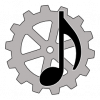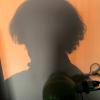
Posted
In the attached files you can look at the results of my tests on the inversions of a C6 chord (C-E-G-A-C).
From bar 5 on, I used the Invert Up option from menu Transform.
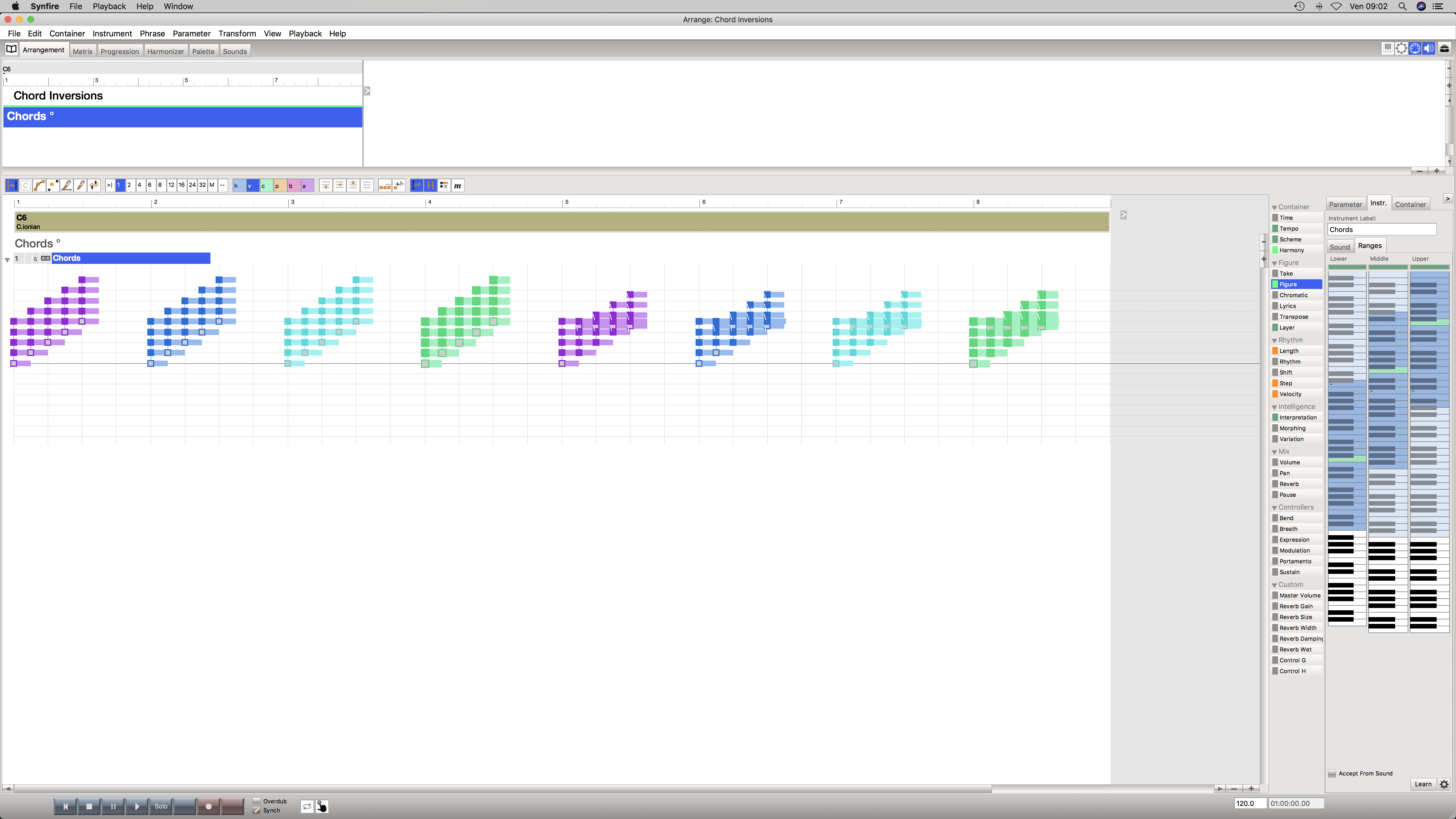
As you can see, only the purple figure in bar 1 performed a regular inversion. In all other cases Synfire changed, at some points even dramatically, voicing and melodic profile.

_Roberto
Fr., 03.11.2017 - 10:21 Permalink
Inversion can me made easy in the progression tab : say you have a C chord ( in view menu : tick bass ), select chord : keyboard number 1 is root , ..2 is first inversion and 3 is second inversion and you will see this in the progression depicted and in the keyboard below the chord too.
Is this menu entrance : invert up or down, the same as i explained here above?
Fr., 03.11.2017 - 11:54 Permalink
Roberto: What settings of the Interpretation parameter did you use in your testing?
Fr., 03.11.2017 - 11:58 Permalink
default settings in root container
Fr., 03.11.2017 - 12:00 Permalink
I voluntarily left the default settings to study the standard behavior of Synfire with an isolated chord
Fr., 03.11.2017 - 12:02 Permalink
Here is the .cognac file
Fr., 03.11.2017 - 12:37 Permalink
Always be aware that when rendering figure segments, Synfire starts at the anchor and then continues relative to that result, left/below and right/above of the anchor. The position of each symbol as shown in the grid is not a fixed mapping to midi pitch. What looks like as series of straight chords can turn into something completely different, if their anchors are not set consistently.
Switching the anchor to another symbol alone will lead to a different result already.
If you have multiple chord-like segments close to each other, they do influence each other in that the next segment tries to pick for its anchor a midi pitch that is close to the previous's segment's anchor (if they are on the same line in the grid). This influence diminishes with increasing distance.
Fr., 03.11.2017 - 12:48 Permalink
Thank you Andre.
I was testing right now the influence of anchors on chords sequences. The influence of the anchors is not yet entirely clear to me, but I keep on experimenting.
Fr., 03.11.2017 - 12:51 Permalink
Although the user manual warns you not to try to do a "science of the anchors"... :-))
Fr., 03.11.2017 - 13:11 Permalink
I could well be wrong, but in this brief chords sequence I found only two symbols that, when assigned to an anchor, change the output. Here follow the Synfire Arranger window and the notated output.
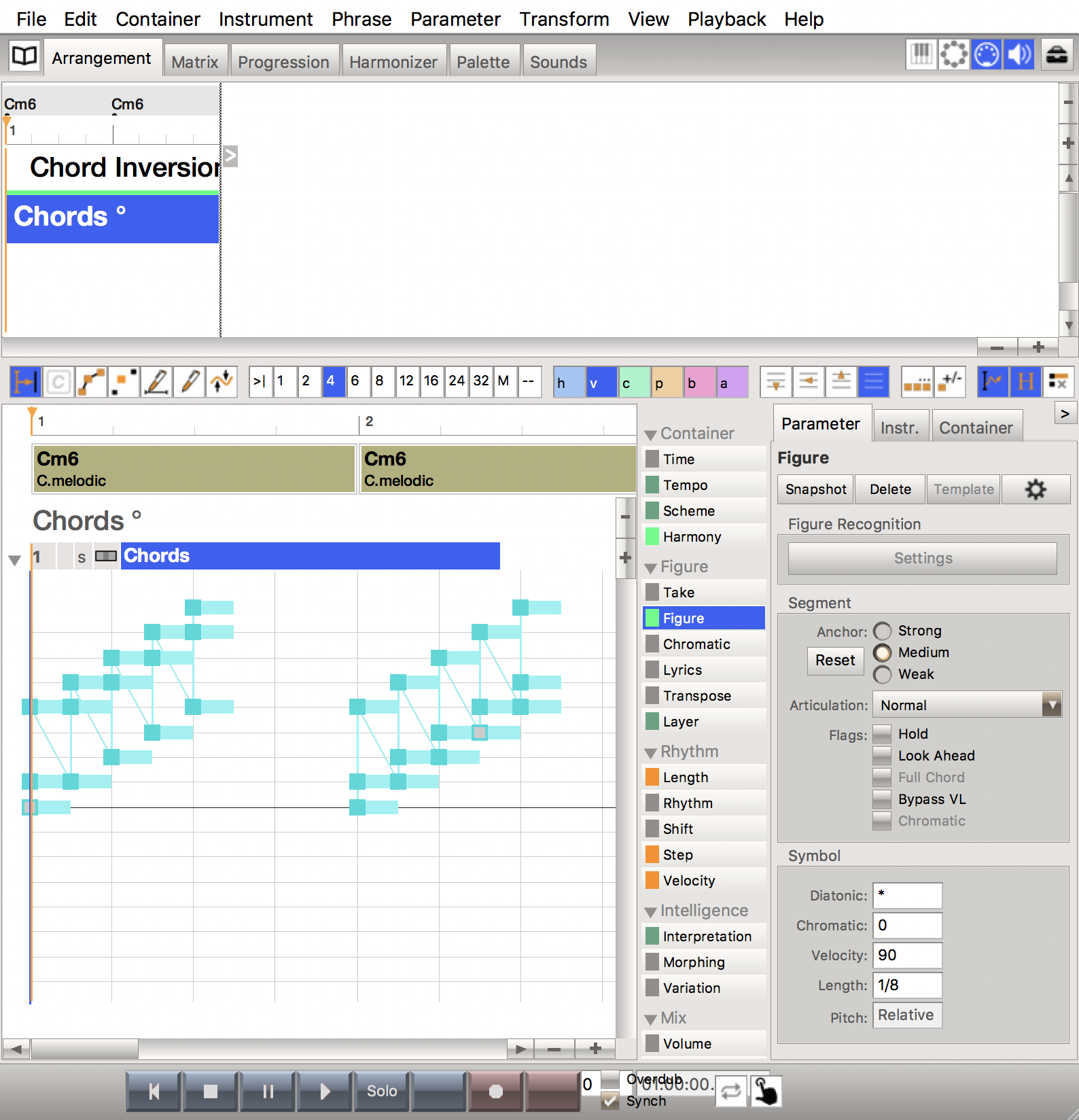

Fr., 03.11.2017 - 13:19 Permalink
Oops... my fault. I realized that I used two different voicings in the chords sequences. Here follows the right version with three different anchors positions.
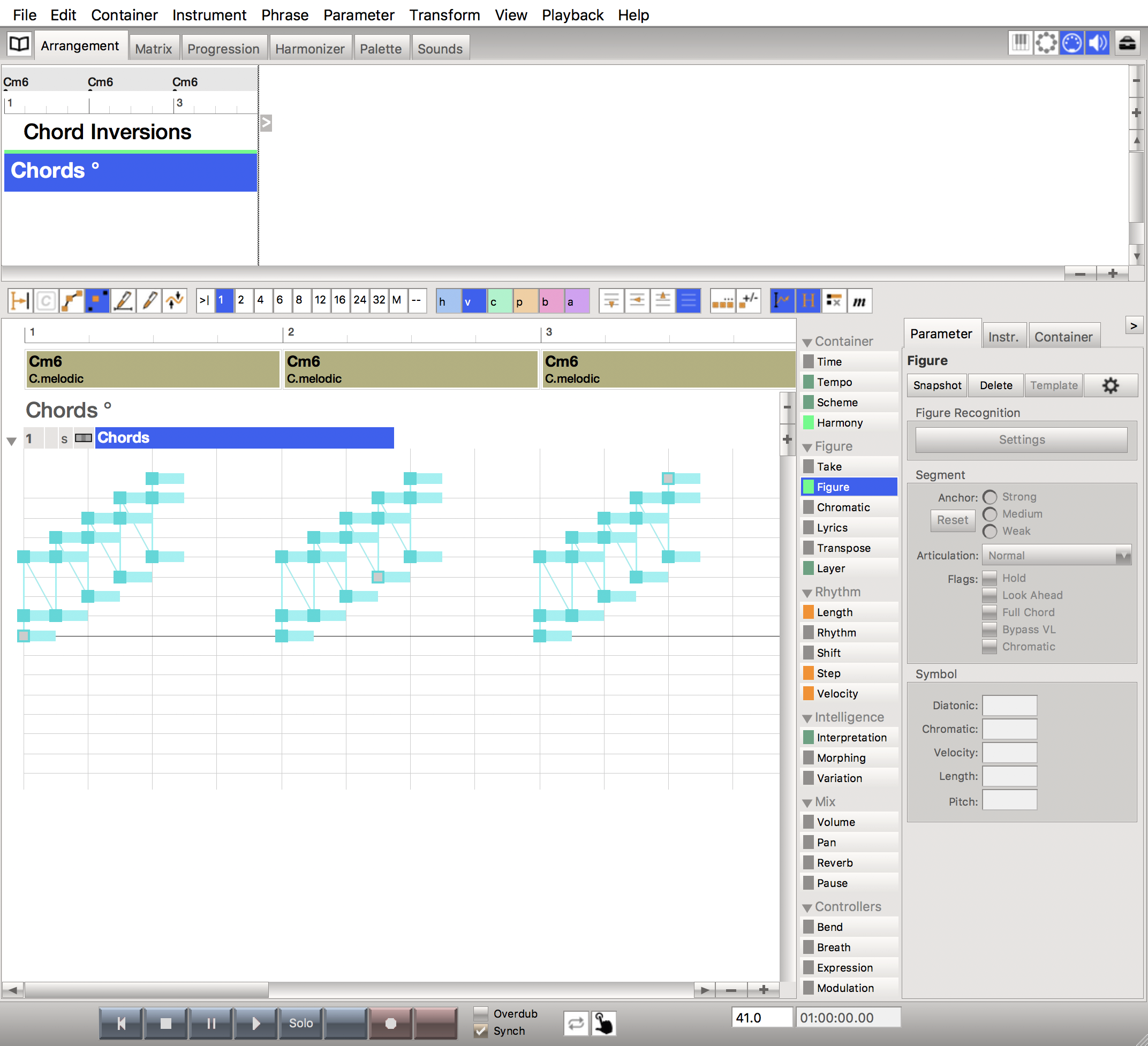

Fr., 03.11.2017 - 14:07 Permalink
Andre, would you suggest to set at least two anchors for each “phrase” to give Synfire as many consistent pitch references as possible?
Fr., 03.11.2017 - 14:10 Permalink
In other words should we consider an anchor a kind of “lighthouse” used by Synfire more or less like an X/Y (pitch/time) coordinate?
Fr., 03.11.2017 - 14:33 Permalink
(anything related to Schenkerian analysis?)


